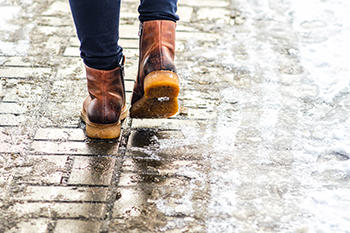
Embarking on winter hikes demands a strategic approach to ensure feet remain snug and warm amidst the frosty trails. Begin by selecting insulated footwear designed to shield against the cold's relentless bite. Opt for moisture-resistant materials to prevent dampness, a common culprit for chilly discomfort. Employ thick, woolen socks as an additional layer of defense, promoting insulation without compromising breathability. Consider gaiters, which act as a barrier against snow infiltration, maintaining a dry and toasty environment for your feet. Watch for proper shoe size to allow for circulation, preventing constriction that can lead to frosty toes. Embrace the power of quality insoles, providing extra padding and insulation against the frigid ground. By integrating these measures into your winter hiking routine, you will effortlessly preserve the warmth of your feet, allowing you to relish the beauty of snowy landscapes without the distraction of cold discomfort. Hiking during the winter months is enjoyed by many people. If you are interested in pursuing this type of activity, it is suggested that you consult a chiropodist for additional information for tips about appropriate footwear.
The winter months can bring about new or worsening foot and ankle problems. If you’re suffering from foot or ankle pain, please consult with Emily Yu, B.Sc from Uptown Foot Care Clinic. Our specialist can help you maintain the health of your lower limbs and your mobility.
Winter Foot Problems
Cracked heels - Dry, cracked skin on the heels of the feet that is associated with cold, dry weather
Athlete’s foot - A fungal infection on the skin of the feet
Blisters - Fluid-filled bubbles of skin that usually form in response to friction
Fractures - Broken bones in the feet or ankles
Metatarsalgia - General foot pain
Chilblains - Spasming of the small blood vessels in the toes in response to exposure to cold weather
Raynaud’s disease - Numbness, pain, and color changes in the toes due to cold weather
Prevention
Wear warm socks and shoes
Avoid prolonged exposure to the cold
Moisturize the heels regularly
Keep your feet clean and dry
Walk carefully in areas that may be icy
Wear non-slip shoes
If you have any questions, please feel free to contact our office located in . We offer the newest diagnostic and treatment technologies for all your foot care needs.
